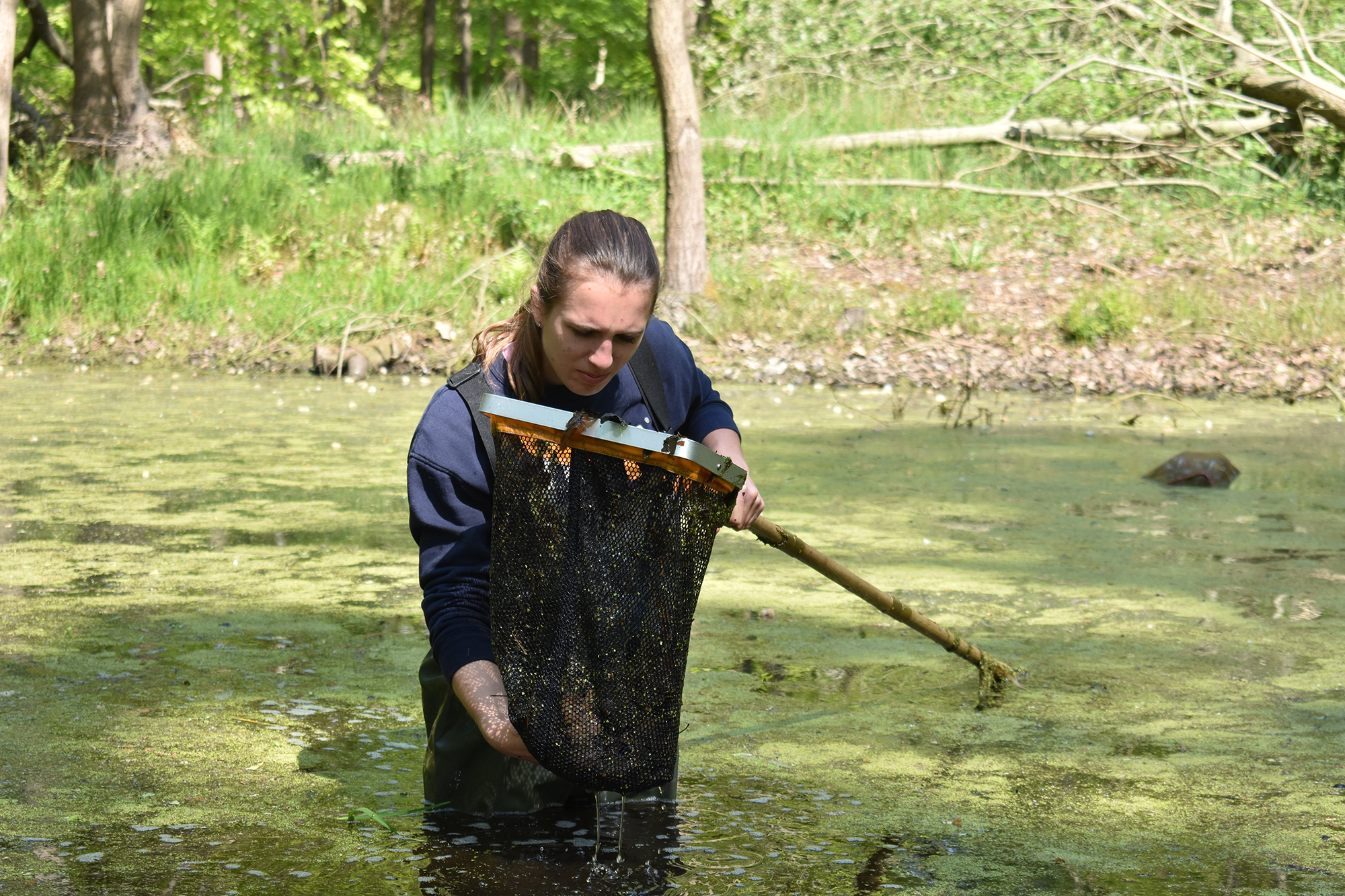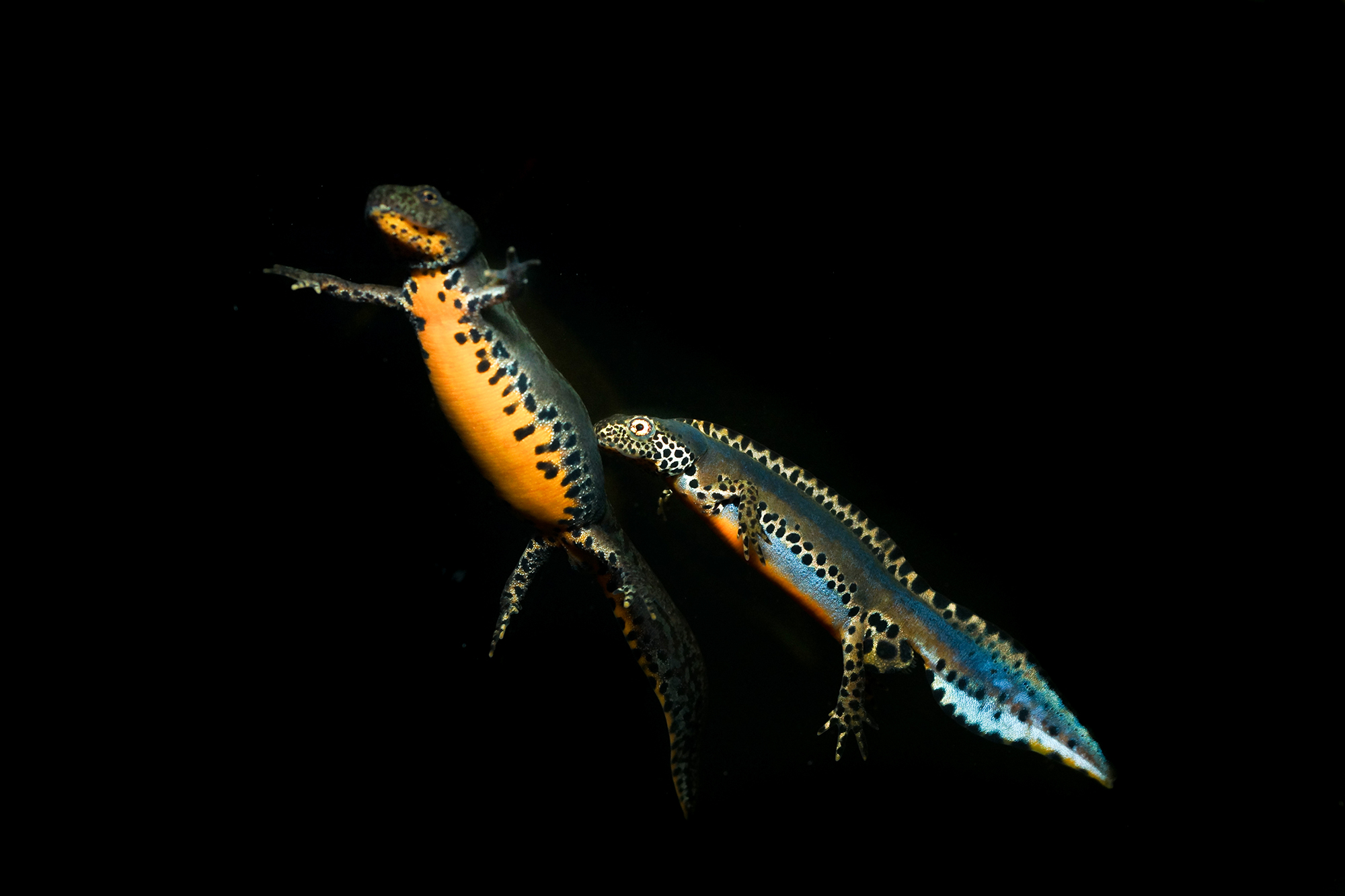
Exotic alpine newts didn’t travel to the Netherlands themselves, but were released by humans
Leiden biology students have determined the origin of exotic alpine newts in the Netherlands using a special DNA technique. The animals come from different corners of Europe and were probably released by humans. As exotic species, they can be harmful to nature and biodiversity.
The flamboyant alpine newt has been released outside its natural range on a massive scale - even as far away as New Zealand. Naturally, the alpine newt is found in continental Europe, including the southern part of the Netherlands. But now, they can also be found in much of the rest of the Netherlands due to human introduction. And those introduced populations are exploding, it turns out. But where did the ancestors of these new populations originally come from? Two students from Leiden University and Naturalis Biodiversity Center have answered this question in collaboration with RAVON (Reptile, Amphibian & Fish Conservation Netherlands).
DNA reveals answer
Many hundreds of alpine newts have been genetically screened with DNA barcoding, a technique that quickly and easily reads the letter sequence of a specific piece of DNA. This piece of DNA shows variation between species and even between populations of the same species. ‘We can use this to compare the DNA profile of a specific "mystery newt" with that of newt from its natural range, in order to determine the correct origin, or even species,’ says Sam van Veldhuijzen, one of the students on the research team.
The newts studied came from both the natural range and introduced populations. A large international team of scientists helped collect the necessary samples. In the Netherlands, many citizen scientists helped by swabbing newts with cotton swabs to extract skin mucus containing DNA. ‘The DNA exposed a complicated introduction history,’ says fellow student Jody Robbemont.
-

Biology student Jody Robbemont with wading suit and landing net, is looking for alpine newts in Dutch waters. -

A DNA sample is collected by biology student Sam van Veldhuijzen. -

A pregnant alpine newt female (left) with an alpine newt male in splendor behind her (right).
Cryptic species discovered
The alpine newt is a special case. It’s probably not a single species, but a collection of species that are very similar in appearance. So they look very similar, but genetically these "cryptic species" are very different. The new DNA results show that as many as three of the five cryptic alpine newt species have been introduced to the Netherlands. Only one also occurs here naturally, although it has also been released in much of the country where it does not belong. ‘The other two species are originally from Italy, which we found in the Krimpenerwaard, and from the Balkans, which has now conquered much of the Veluwe,’ says Robbemont.
Dumped pets
What possesses people to release alpine newts in such massive numbers? Alpine newts are very beautiful and, for some people, an exotic embellishment to their pond - and from there it is a small step for the newts to spread further.
Exotic species eat and displace native species, and bring diseases that local species cannot withstand.
Introductions further from home are more likely to indicate dumped pets. Yet it is very unwise to simply release non-native organisms, or species that do not occur naturally here, into the wild. In fact, exotic species pose one of the greatest threats to local biodiversity. They eat and displace native species, and bring diseases that local species cannot withstand.
The alpine newt situation demonstrates well how the introduction of an exotic species can still go fairly unnoticed. Van Veldhuijzen therefore advises: ‘If you have a salamander, frog or other pet but can no longer care for it, never leave it free in the wild but take it to the proper shelter.’
The article 'An extended mtDNA phylogeography for the alpine newt illuminates the provenance of introduced populations' appeared in Amphibia Reptilia, and is written by Jody Robbemont, Sam van Veldhuijzen and others.
The article ‘MtDNA barcoding of exotic amphibians in the dunes’ written by Ben Wielstra and others, appeared in RAVON in 2023.
Text: Ben Wielstra and Manon de Visser, Leiden University & Naturalis Biodiversity Center and Tariq Stark and Richard Struijk, RAVON.
Images: Jody Robbemont (photo Sam van Veldhuijzen), Nienke Prins (photo Jody Robbemont) & Michael Fahrbach (photos alpine newts)
